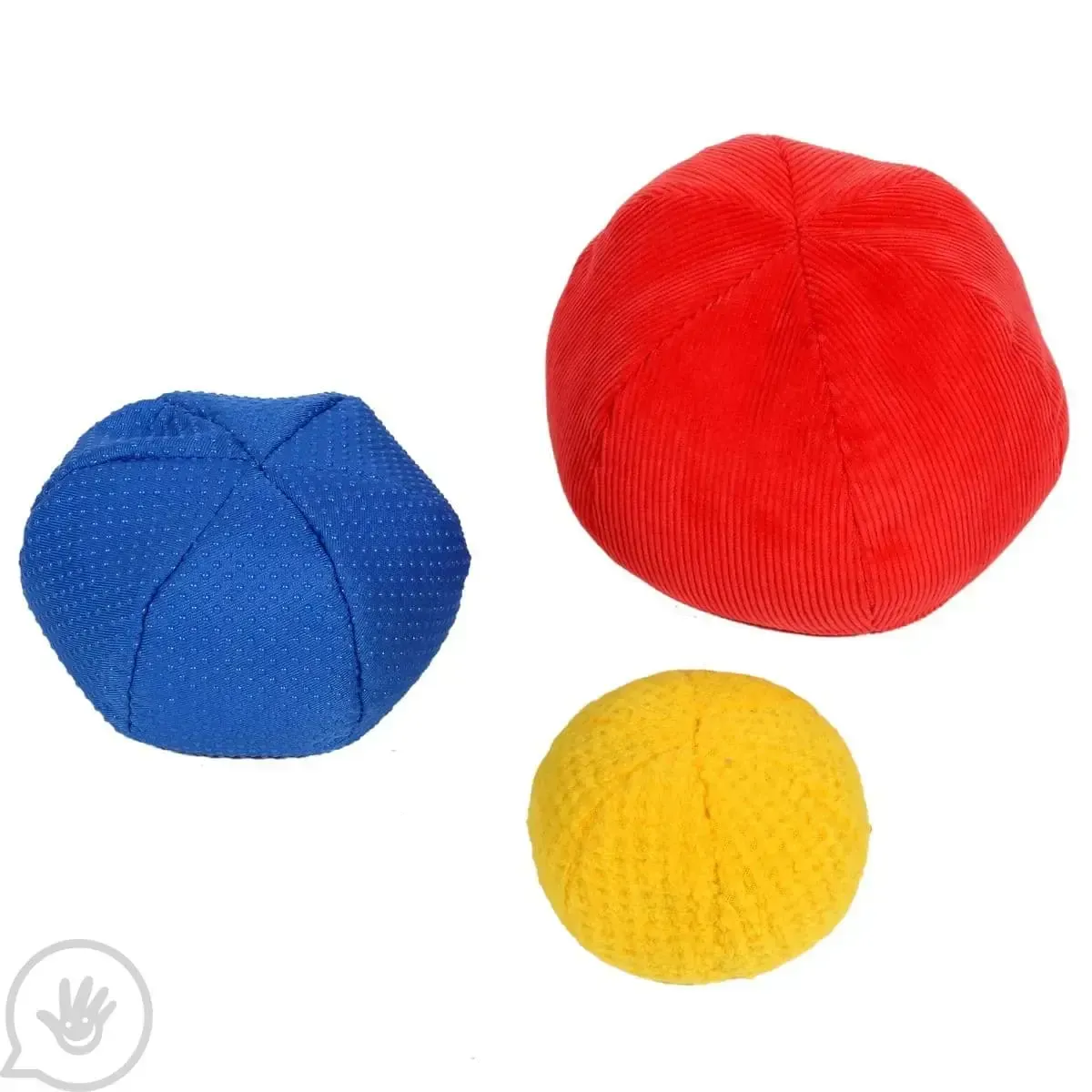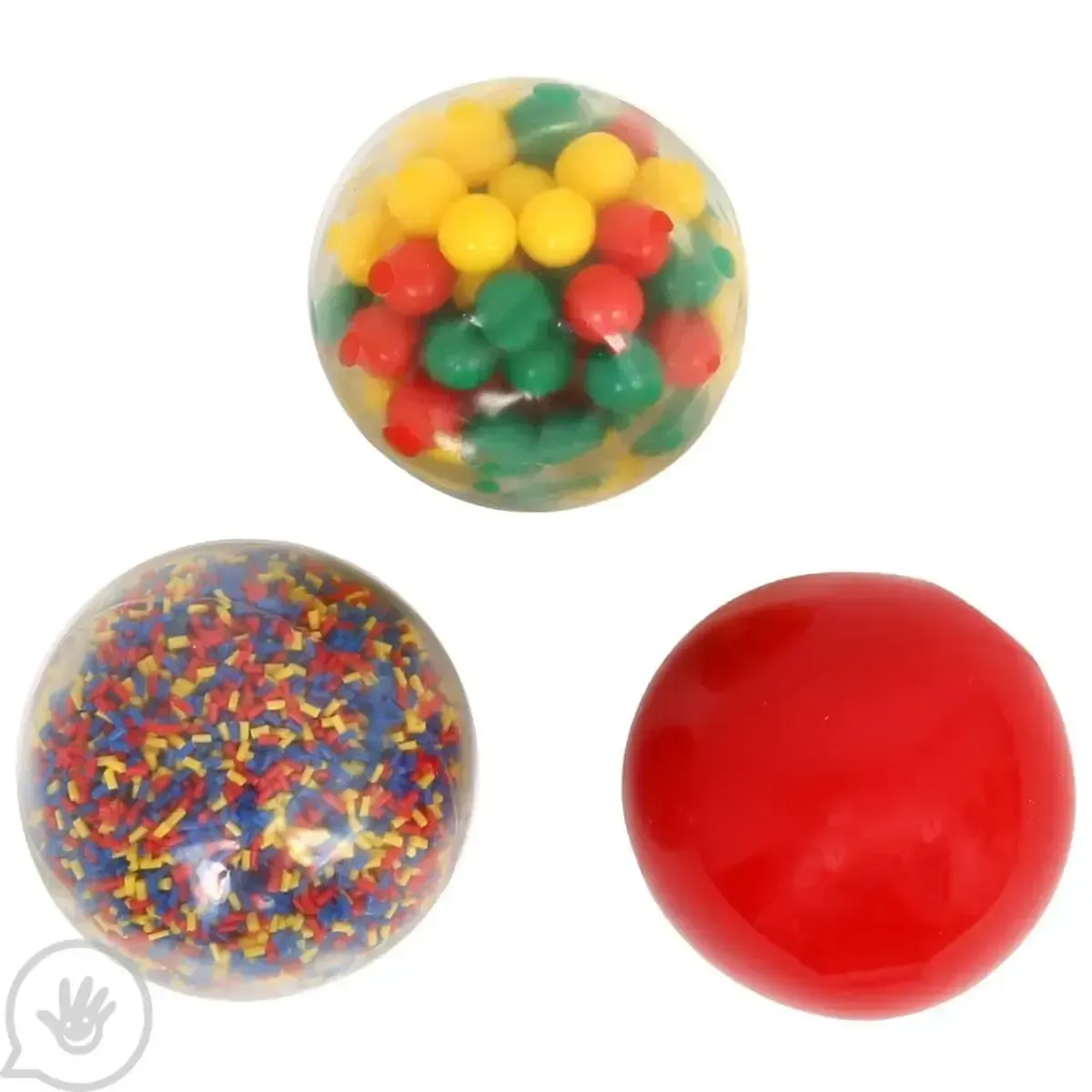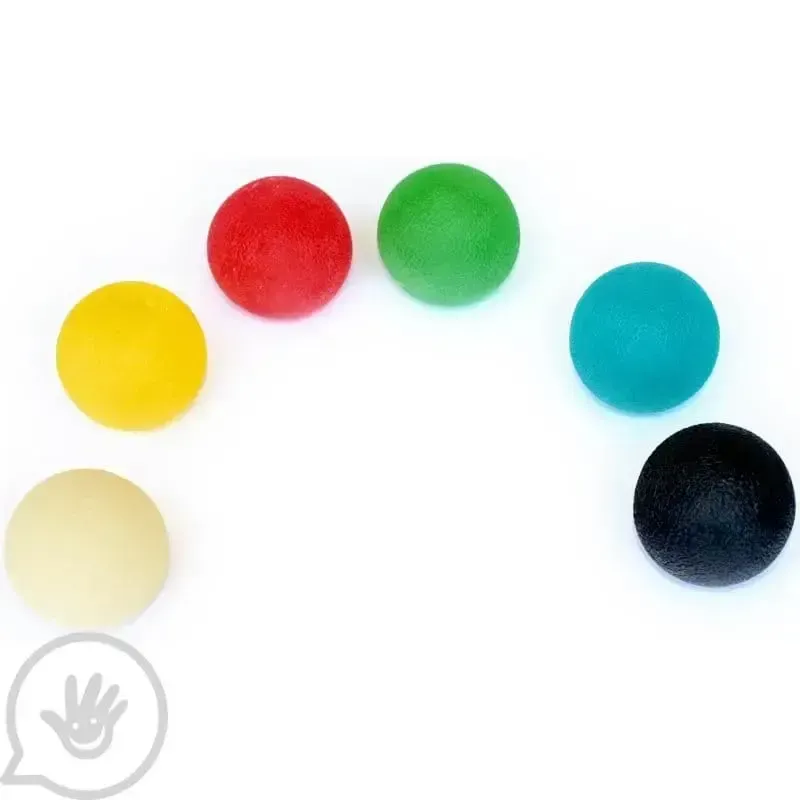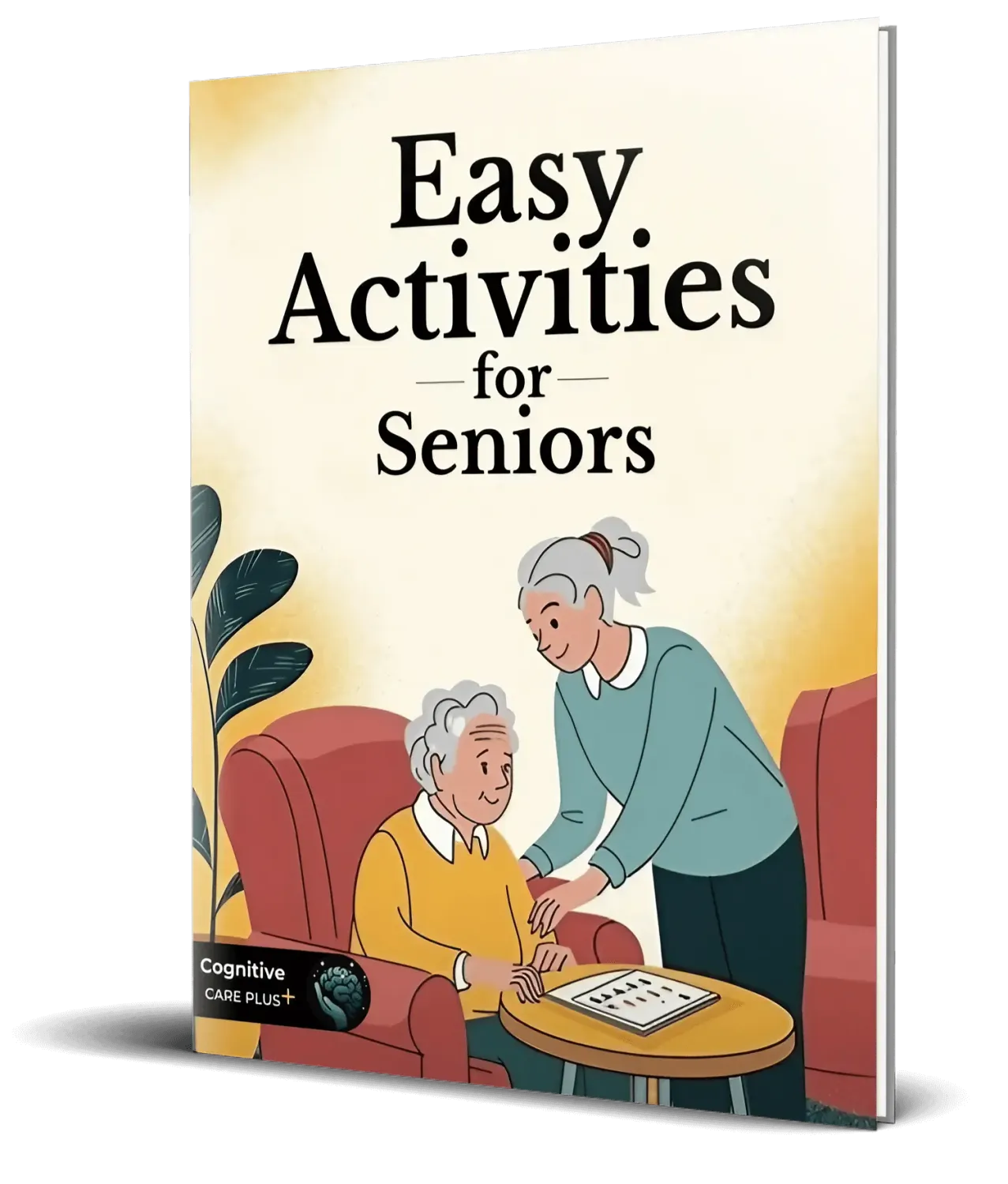The Best Sensory Balls for Adults with Dementia: Stress Relief and Cognitive Stimulation
Introduction
Have you ever noticed how simply squeezing a small ball can bring a sense of calm?
As someone currently caring for my mother with Alzheimer’s, I’ve learned that even small things like sensory balls can bring comfort and connection. At first, it seemed too simple to make a difference—but I quickly realized how much these little tools helped reduce her stress and keep her engaged.
Sensory balls for adults are more than just toys. They are powerful allies for stress relief and cognitive stimulation in people with dementia. Let’s explore how they can make daily life a little easier, calmer, and even more joyful.
🎧 Prefer to listen? Play our podcast episode below to learn how sensory balls can ease stress, improve focus, and create meaningful moments of connection for adults with dementia.
✨ Enjoyed the episode?
Subscribe to the Cognitive Care Plus Podcast for practical guides, expert insights, and compassionate support to help you care for your loved one with dementia.
What Are Sensory Balls and How Do They Work?
A sensory ball is designed to awaken the sense of touch. It can be soft, squishy, spiky, or textured, encouraging the brain to process new sensations. Think of it like exercise for the hands and the mind—just like a gym workout but for the nervous system.
When your loved one squeezes, rolls, or tosses the ball, they are engaging in sense of touch activities. This not only calms anxiety but also keeps the brain active through tactile sensory activities.
Benefits of Sensory Balls for Adults with Dementia
Stress Relief and Anxiety Reduction
We all carry tension in our hands—clenching fists when stressed or tapping fingers when nervous. For adults with dementia, this restlessness is often stronger. That’s where stress balls for adults and squishy sensory balls come in.
By simply squeezing the ball, muscles release tension, and the repetitive motion signals the brain to relax. It’s almost like a “reset button” for stress. In fact, many caregivers find that these balls work as well as more complex stress relief toys for adults—but are simpler and more portable.
Cognitive Stimulation and Focus
Every time your loved one explores a new texture, they activate brain pathways related to sensory stimulation for dementia. This can improve focus, attention, and even spark memories.
I often compare it to walking through a garden: each flower, smell, and color brings a new sensation. A sensory ball offers that variety in the palm of the hand, encouraging the brain to stay engaged and curious.
Motor Skills and Hand Strength
Holding and squeezing also helps maintain grip and flexibility. Therapy balls for hands, hand therapy balls, and grip strength balls are often used in rehabilitation, and sensory balls bring similar benefits—while adding an emotional layer of comfort.
For seniors who may struggle with daily tasks like buttoning a shirt or holding utensils, these simple exercises can make a big difference.
For caregivers looking to explore more ways to engage the senses, the article Benefits of Sensory Stimulation for Dementia offers practical ideas supported by research. It explains how touch, sound, and other sensory inputs can reduce anxiety, spark memories, and improve overall well-being for people living with dementia.
If you’d like to go deeper into the science, the study Sensory and memory stimulation as a means to care for dementia-specific issues provides an academic perspective on how these approaches can improve quality of life and support cognitive health.
Comparison of Sensory Balls for Adults with Dementia
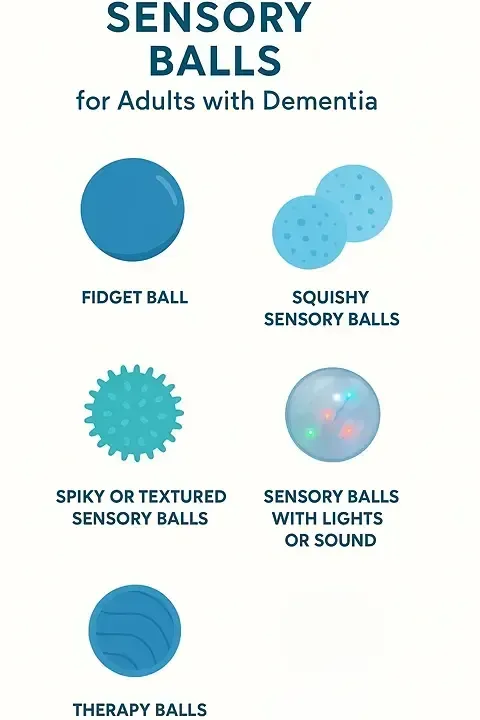
Choosing the right sensory ball can feel like picking the right pair of shoes—what works for one person may not feel comfortable for another. Some are soft and soothing, others spiky and stimulating, and a few even light up or make gentle sounds. As someone currently caring for my mother with Alzheimer’s, I’ve seen how the right texture or feature can spark comfort, focus, or even a little joy.
Here’s a comparison of the most popular options to help you decide which one might be the best fit for your loved one:
| Type of Sensory Ball | Main Features | Best For |
|---|---|---|
| Stress Relief Toys for Adults | Classic stress balls with firm resistance | Calming fidgety hands and lowering anxiety |
| Fidget Squishy Balls / Fidget Ball | Stretchy, squeezable, often gel-filled | Releasing restless energy, keeping hands busy |
| Squishy Sensory Balls | Soft textures, sometimes slow-rising foam | Comfort and soothing tactile input |
| Spiky or Textured Sensory Balls | Nubs or raised surfaces that stimulate touch | Improving circulation, stronger tactile feedback |
| Sensory Balls with Lights or Sound | Light-up or jingle features when moved | Engagement, attention, and sensory variety |
| Therapy Balls for Hands / Hand Exercise Balls | Firmer, often used in rehabilitation | Strengthening grip, hand therapy, dexterity training |
No two people with dementia respond in the same way. What feels calming for one may feel uninteresting for another. That’s why I often suggest starting with two or three different types of sensory balls—maybe a soft squishy one for comfort, a textured one for stimulation, and a light-up ball for a bit of fun. You might be surprised at which one your loved one connects with most.
Looking for the right sensory ball? Here are three trusted options that bring calm, focus, and joyful stimulation to dementia care.
Sensory Balls vs. Other Dementia Toys
You may have heard of fidget toys for adults or dementia fidget toys. These also provide relief and stimulation, but sensory balls stand out because:
They are safe and easy to use (no small parts or complex mechanisms).
They fit in a pocket, so they’re always accessible.
They can be used anywhere—sitting at the table, during a walk, or even while watching TV.
While fidget toys for dementia patients are wonderful, sensory balls remain one of the simplest and most effective tools.
How to Choose the Best Sensory Ball for Your Loved One
When shopping, keep these factors in mind:
Size: Make sure it fits comfortably in the hand.
Texture: Soft, spiky, or squishy—choose what feels most pleasant.
Resistance: Some balls are firmer for exercise, others softer for comfort.
Safety: Non-toxic materials are essential.
If your loved one is older, lighter and softer sensory toys for elderly are often best, while firmer options may be better for those who need hand exercise balls.
Discover the Perfect Sensory Ball for Your Loved One
Finding the right sensory ball can make a big difference in comfort, stress relief, and cognitive engagement. Explore our carefully selected Fidget Toys for Dementia Care and choose the one that brings joy and stimulation to your loved one today.
Calming Activities with Sensory Balls
Watch this short video to see demonstrations of rolling the ball finger to finger, massaging the palms, and using both hands at once. These simple movements can be repeated throughout the day to reduce anxiety or boost attention.
Here are some simple ways to use them:
Gentle squeezes in sets of 10 to release tension.
Rolling the ball between both hands like warming dough.
Passing the ball back and forth with a caregiver, turning it into a bonding game.
These small moments can become calming activities for dementia patients, helping them feel grounded and connected.
FAQ
What are sensory balls used for?
Sensory balls are designed to stimulate the sense of touch. They may be soft, spiky, or squishy, and are often used to reduce stress, keep the hands active, and provide calming sensory input.
Are sensory balls good for dementia?
Yes. They are among the simplest dementia toys for adults, promoting relaxation and sensory stimulation for dementia.
Can sensory balls reduce stress?
Absolutely. Like other stress balls for adults, they provide immediate relief from anxiety through repetitive movement.
What’s the difference between sensory balls and therapy balls?
Therapy balls and hand therapy balls are often used in rehabilitation clinics for physical recovery. Sensory balls, on the other hand, add the benefit of tactile exploration and emotional comfort.
What are therapy balls?
Therapy balls are firmer balls often used in occupational therapy or rehabilitation. They help strengthen muscles, improve flexibility, and support recovery from hand or wrist injuries.
What are hand therapy balls used for?
Hand therapy balls are designed to improve grip strength, joint mobility, and dexterity. For seniors, they can make everyday tasks like eating or dressing easier.
How to use hand exercise balls?
Begin with simple squeezes in sets of 10. You can also roll the ball between both hands, or pass it back and forth with a caregiver to turn it into a calming, engaging activity.
Conclusion
Sometimes, the most powerful tools are also the simplest. A sensory ball may look like just a toy, but for adults with dementia it can be a pathway to calm, focus, and connection.
When I first introduced them to my mother, I didn’t expect much. But soon I saw her smiling while rolling the ball in her hands. That small moment of joy reminded me that care is not just about medical treatment—it’s about human connection.
👉 Consider adding a few sensory balls for adults to your care routine. They are inexpensive, easy to use, and can bring meaningful comfort to your loved one.
Join Our Caring Community 💙
Subscribe to receive practical tips, helpful resources, and engaging activities for supporting loved ones with memory challenges. Stay informed, stay empowered!
🩵 Want more free tools to make caregiving smoother? Join our list and get practical resources delivered to your inbox.
Share this article:
If this article helped you, share it with other caregivers who need encouragement.
💬 We’d love to hear from you!
Have you tried using sensory balls with your loved one who has dementia? What activities or techniques worked best, and did you notice changes in their mood or focus? Share your experiences in the comments below—your story could inspire and guide another caregiver on this journey.

Trending
Simple tools that make caregiving...
Turning simple play into a brain-boosting activity...
Here’s what to look for when choosing...

About me

Hi there 👋 My name is George Cassou, I'm a psychologist and the creator of this blog. Inspired by my journey caring for my mom with Alzheimer's, I share activities and tips to bring joy and connection.

Affiliate Disclosure:
This website contains affiliate links. If you click on these links and make a purchase, we may earn a small commission at no additional cost to you. These commissions help us keep this site running and allow us to continue creating helpful content to support caregivers and families.
